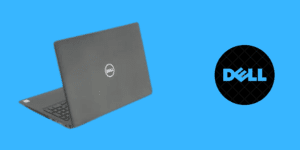Guide to Display Features in Second Hand Laptops
Introduction
The display is a crucial component of a laptop, as it directly impacts your visual experience while using the device. When purchasing a second-hand laptop, understanding the various display features can help you make an informed decision. In this guide, we will explore the key display features to consider when evaluating second-hand laptops, including resolution, size, panel type, and additional features.
Resolution
The resolution of a laptop display refers to the number of pixels it can display horizontally and vertically. Higher resolutions generally result in sharper and more detailed visuals. Here are some common display resolutions found in second-hand laptops:
- HD (1366 x 768): This is the most basic display resolution. It provides decent clarity for everyday tasks but may not offer the best visual experience for multimedia consumption or content creation.
- Full HD (1920 x 1080): Full HD displays offer sharper visuals and are suitable for tasks like video streaming, photo editing, and gaming.
- Quad HD (2560 x 1440) and 4K Ultra HD (3840 x 2160): These higher resolutions provide exceptional clarity and detail. They are ideal for professionals who require precise color accuracy and high-resolution content creation.
When choosing a second-hand laptop, consider the resolution that best suits your needs based on the type of tasks you intend to perform and your budget.
Display Size
The display size refers to the diagonal measurement of the screen and is typically expressed in inches. The size of the display impacts factors such as portability and viewing comfort. Here are some common display sizes found in second-hand laptops:
- 11 to 13 inches: Laptops with smaller display sizes are highly portable and lightweight. They are suitable for users who prioritize mobility and often work on the go.
- 14 to 15.6 inches: These display sizes strike a balance between portability and screen real estate. They are commonly found in mainstream laptops and offer a comfortable viewing experience.
- 17 inches and above: Laptops with larger displays are generally preferred by gamers and professionals who require a larger workspace. However, they tend to be bulkier and less portable.
Consider your usage scenarios and preferences when deciding on the display size for your second-hand laptop.
Panel Type
The panel type of a laptop display influences factors such as color reproduction, viewing angles, and response times. Here are the three common panel types found in second-hand laptops:
- Twisted Nematic (TN): TN panels offer fast response times, making them suitable for gaming and fast-paced content. However, they often have narrow viewing angles and may provide less accurate color reproduction compared to other panel types.
- In-Plane Switching (IPS): IPS panels provide wider viewing angles and more accurate color representation. They are favored by professionals who require precise color reproduction and a wider range of viewing angles.
- Vertical Alignment (VA): VA panels offer a middle ground between TN and IPS panels. They provide good color reproduction and wider viewing angles compared to TN panels but may not match the color accuracy of IPS panels.
Consider the type of work you will be performing on the laptop and your requirements for color accuracy and viewing angles when evaluating the panel type.
Additional Display Features
Apart from resolution, size, and panel type, there are other features that can enhance your display experience:
- Touchscreen: Touchscreen displays allow you to interact with the laptop using touch gestures. They can be beneficial for tasks like drawing, note-taking, and navigating touch-friendly applications.
- Anti-Glare Coating: Laptops with anti-glare coatings on their displays reduce reflections and minimize eye strain in bright lighting conditions. This feature is particularly useful for users who work in well-lit environments or frequently use their laptops outdoors.
- High Refresh Rate: Some laptops offer displays with high refresh rates, typically 120Hz or 144Hz. A higher refresh rate results in smoother visuals, making it beneficial for gaming and fast-action content.
Consider these additional display features based on your specific requirements and preferences.
Conclusion
Understanding the display features is essential when evaluating second-hand laptops. Consider the display resolution, size, panel type, and additional features to ensure that the laptop meets your visual needs and preferences. A higher resolution provides sharper visuals, while the display size and panel type impact portability, viewing angles, and color accuracy. Additional features like touchscreens, anti-glare coatings, and high refresh rates can further enhance your display experience. By considering these factors, you can select a second-hand laptop with a display that offers an optimal visual experience for your needs.

